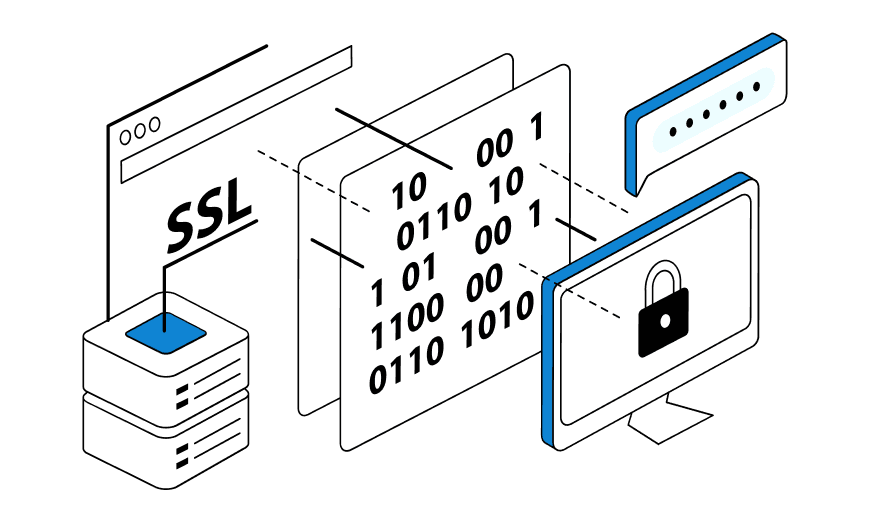
Scraping eBay is a great way to collect data on products, prices, sellers, and reviews for market analysis, trade automation, or creating your own e-commerce projects. But this process requires accuracy: eBay actively protects itself from bots, and the wrong approach can lead to bans, IP blocking, and other problems.
In this article, we will figure out how to start parsing eBay correctly, where to start as a beginner, which tools to choose, and why you won’t get very far without mobile proxies.
Preparing for eBay scraping
Before writing code or running a parser, it is important to prepare properly: create a separate account, set up a secure network environment, and choose the right tools for scraping eBay.
Choosing and registering an account
Although the eBay parser can work without authorization, when collecting more accurate or “deep” data (for example, sales history or prices from specific sellers), it is better to use a registered account. Create a separate account specifically for these purposes — do not use your main account to avoid the risk of being blocked.
When registering, it is recommended to:
- Provide real, but not sensitive, data.
- Use a separate email address.
- Do not connect your main payment information.
This will protect you in case of possible blocks.
Why you need mobile proxies
Mobile proxies for scraping are not a luxury, but a necessity. The fact is that eBay actively fights bots and quickly blocks suspicious requests from the same IP addresses. Especially if you use regular data center proxies or your home IP.
Mobile proxies:
- Change dynamically, imitating real user behavior.
- Are less likely to be blacklisted.
- Allow you to send dozens of requests in parallel without the risk of being blocked.
- Bypass most eBay protections.
If you plan to parse eBay regularly, your bot won’t last long without mobile proxies.
Tools and libraries (Python, BeautifulSoup, Selenium)
For beginners, Python remains the best choice — a language with a huge ecosystem and many libraries for web scraping. Here is the minimum set to start with:
Requests + BeautifulSoup. Suitable for simple HTML page parsing. If eBay provides the necessary data without protection, this solution will suffice. Fast, easy, and without unnecessary overhead.
Selenium. Used when data is loaded dynamically (via JavaScript) or when you need to simulate user behavior (e.g., scrolling, clicks, form entries). The downside is that it requires more resources and time, but it bypasses some protections.
Undetected ChromeDriver + Selenium Stealth. Bypass eBay’s anti-bot protection. Such tools are necessary if parsing requires authorization or the site actively monitors user behavior.
Lxml, scrapy, playwright — optional. They can be connected once the basic stack has been mastered.
You will also need a logger to track errors and the status of the parser. For example, logging, loguru, or saving reports in CSV/Excel.
Setting up the environment and proxy
Effective parsing of data from large trading platforms such as eBay requires not only well-written code, but also careful preparation of the environment. Incorrect configuration can lead to blocking by the site, a decrease in the speed of the parser, and, as a result, the loss of valuable information. In this context, the correct installation of the necessary software and the thoughtful use of proxy servers play a key role.
Installing Python and dependencies
The first step in creating a reliable eBay product parser is to install the Python programming language, which has become the de facto standard in web scraping. In addition to the interpreter itself, you will need to install a number of libraries that greatly simplify the process of interacting with web pages. Among the most popular are requests for sending HTTP requests, Beautiful Soup or lxml for parsing HTML code and extracting the necessary data.
For convenient dependency management, it is recommended to use a virtual environment, which allows you to isolate the project from other Python projects and avoid library version conflicts. Creating and activating a virtual environment is a standard practice that ensures the cleanliness and reproducibility of the workflow.
Configuring mobile proxies in code
eBay, like many other large web resources, actively combats automated data collection by using various methods to detect and block bots. One of the most effective ways to bypass these restrictions is to use mobile proxies. Mobile proxies provide IP addresses belonging to real mobile devices, which significantly reduces the likelihood of being blocked compared to regular server proxies.
Proper configuration of mobile proxies in the parser code is a critically important aspect. It is necessary to provide a proxy rotation mechanism so that each request is sent from a new IP address. This allows you to mimic the behavior of real users and avoid patterns characteristic of bots. Libraries for working with HTTP requests, such as requests, provide convenient tools for configuring proxies. It is important to ensure that proxy credentials (IP address, port, login, and password, if required) are transmitted correctly with each request.
Using an anti-detection browser to bypass blocks
In addition to using mobile proxies, anti-detection browsers can provide another level of protection for the parser. Proxies for anti-detection browsers allow you to emulate unique browser profiles by substituting various parameters such as User-Agent, screen resolution, time zone, WebGL fingerprint, and others. This makes it much more difficult for the website to identify automated requests.
Anti-detection browsers can be integrated into the parsing process in various ways. One option is to use special libraries that automate the launch and management of anti-detection browser profiles. Another approach is to use the APIs of the anti-detection browsers themselves, if they are available.
Thus, competent configuration of the environment and the use of mobile proxies in conjunction with anti-detection browsers are essential elements of successful and stable eBay parsing. Attention to these details will help you avoid being blocked, increase the efficiency of your eBay web scraper, and ensure that you receive all the necessary data.

Writing a script for parsing eBay products
After carefully configuring the environment and proxy, the next key step in the eBay scraping process is to develop the parser script itself. The efficiency and stability of the parser directly depend on the thoughtfulness of its logic and its ability to correctly process various features of the eBay web page structure.
Obtaining the HTML code of the page
The initial stage of any parser’s work is obtaining the HTML code of the target web page. For this purpose, Python most often uses the requests library, which allows you to send HTTP requests to the eBay server and receive a response in the form of an HTML document. It is important to form HTTP requests correctly, taking into account the method (GET or POST) and headers (User-Agent, Referer, and others) that can affect the server’s response.
If you use anti-detection browsers, the process of obtaining HTML code may differ. Some libraries allow you to interact with an already open page in an anti-detection browser and obtain its current HTML code. Other approaches may include using the anti-detection browser API to navigate and obtain page content.
Extracting the necessary fields (name, price, link) is the heart of the eBay product parser. After obtaining the HTML code, the next step is to process it and extract the target information. Parsing libraries such as Beautiful Soup or lxml are used for this task. These tools allow you to navigate the DOM tree of an HTML document, find the necessary elements by selectors (CSS or XPath), and extract text attribute values (e.g., href for links) or the text of the element itself (e.g., product name or price) from them.
The data extraction process requires careful analysis of the HTML code structure of eBay pages. Different elements may have unique classes or identifiers that must be taken into account when writing selectors. Regular changes to the site structure may require adjustments to the parser’s operation.
Processing pagination and dynamic content
Most eBay product listing pages contain many elements and are divided into several pages (pagination). To collect all the data, the parser must be able to automatically navigate through the pagination pages and extract information from each of them. Analyzing pagination elements (Next links, page numbers) and forming corresponding requests are an important part of the script’s work.
Another common problem is dynamic content that is loaded onto the page after its initial load using JavaScript. Libraries that only work with static HTML will not be able to obtain such data. In this case, more advanced tools such as Selenium or Playwright may be required, which allow you to emulate browser behavior, execute JavaScript code, and obtain a fully formed DOM. The integration of such tools can be especially relevant when working with anti-detection browsers, as they are also full-fledged browsers and can execute JavaScript.
Writing an effective script for parsing products from eBay also involves the ability to handle pagination and dynamic content. The right choice of tools and careful consideration of the parser’s logic are the keys to successfully collecting the necessary information.
Data collection and storage
Once you have successfully configured the tools and scraped eBay, it is important to organize the correct collection and storage of data. This will allow you to easily analyze the information or integrate it into other systems in the future.
CSV or JSON format
The most popular formats for storing data when parsing are CSV and JSON.
- CSV is convenient for simple tables with products: name, price, link, seller. This format is easy to open in Excel or Google Sheets for analysis.
- JSON is suitable for more complex and nested structures — for example, when you need to save reviews, product characteristics, or price history.
Writing to a database
If you plan to parse eBay regularly and work with large amounts of information, it is more convenient to use a database:
- Relational (PostgreSQL, MySQL) — suitable for structured data and complex queries.
- NoSQL (MongoDB) — convenient for storing JSON-like documents with different structures.
To work with databases, use ORM (e.g., SQLAlchemy for Python) or drivers directly. Connecting to a database will provide convenient storage and quick access to information, especially if you are collecting data from multiple categories and thousands of products.
Error handling and logging
Various errors can occur while running the eBay web scraper, from network failures to blockages and changes in the site structure. To ensure that the parser works stably, you need to organize the following correctly:
- Exception handling — restarting in case of errors, ignoring temporary failures.
- Logging — recording all important events and errors in a file or console so that problems can be quickly identified and corrected.
It is also useful to set up notifications (email, Telegram) to respond quickly to failures.
Tip: when using a proxy and VPN (for example, via OpenVPN), carefully monitor the stability of the connection — disconnections can lead to parser errors. Set up automatic restart or proxy switching to minimize downtime.
Tips for reliable scraping
To successfully and safely scrape eBay, it is important not only to configure the technical part, but also to follow certain rules and methods that will help you avoid being blocked and maintain the stability of your parser.
Respect robots.txt and site rules
The first thing to do is to familiarize yourself with the robots.txt file on the eBay website. This file contains instructions for robots on which pages can and cannot be scanned.
Although technically parsers are not always required to strictly follow these rules, respecting them reduces the risk of being blocked and preserves the reputation of your IP. If the site prohibits scraping certain sections, it is better to bypass them. Also, carefully review eBay’s user agreement — some actions may be prohibited and result in legal consequences.
Slowing down requests (rate limiting)
To avoid looking like a malicious actor, you need to slow down your requests to the server. Frequent and overly fast requests raise suspicion among security systems and can lead to blocking.
The optimal approach is to insert pauses between requests, for example, 1-3 seconds with a small random spread. This mimics the behavior of a live user and helps distribute the load.
Regular proxy updates and IP rotation
Using proxies is only part of the task; it is important to constantly update and change IP addresses. If you use the same address for a long time, the site will quickly remember it and block it. IP rotation is the automatic change of proxies at a specified interval or after a certain number of requests. It is especially effective when using mobile proxies that emulate real mobile networks.
In addition to proxies, it is useful to combine them with a VPN, for example, via OpenVPN, to increase anonymity and avoid geoblocking. Following these recommendations will allow you to scrape eBay for a long time without interruption, obtaining up-to-date and accurate data without unnecessary problems.









